What is Tensor Flow?
Tensor flow is a machine learning framework that allows developers to build and train machine learning models. It was developed by Google Brain Team and is now widely used across various industries.
Tensor flow uses a data flow graph to represent the computation in a machine learning model. The graph consists of nodes and edges, where nodes represent mathematical operations and edges represent the flow of data.
Tensorflow Key Features
- Distributed Computing: Tensorflow supports distributed computing, which allows developers to train models using multiple machines.
- GPU and TPU Support: Tensorflow supports GPU and TPU acceleration, which can significantly speed up the training of machine learning models.
- Tensorboard Visualization: Tensorflow comes with Tensorboard, a visualization tool that allows developers to visualize the computation graph, metrics, and other important information about the model.
- High-level APIs: Tensorflow provides high-level APIs, such as Keras and Estimators, which make it easier to build and train machine learning models.
- Pre-built Models: Tensorflow provides pre-built models for various use cases, such as image classification, object detection, and natural language processing.
Why use Tensorflow?
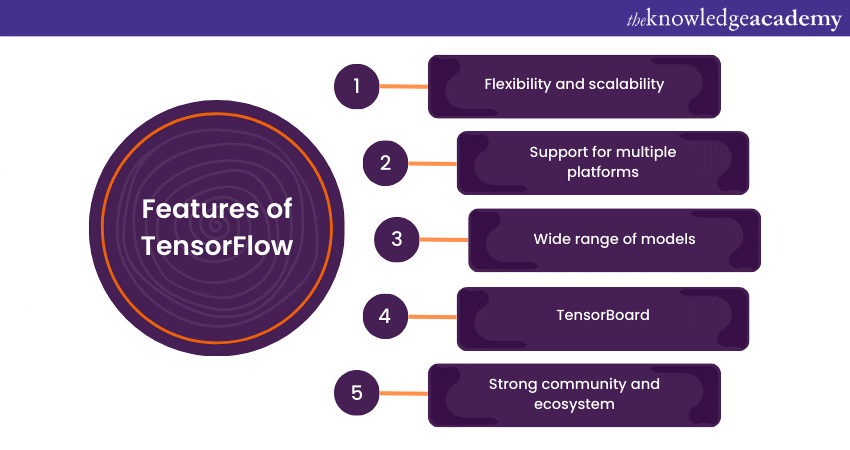
Tensorflow offers several benefits that make it a popular choice for machine learning development. Here are some of the advantages of using Tensorflow:
Advantages of using Tensorflow
- Flexibility: Tensorflow is a highly flexible machine learning framework that allows developers to build and train models for various use cases.
- Scalability: Tensorflow supports distributed computing, which allows developers to scale their models to multiple machines.
- Portability: Tensorflow models can be easily exported and deployed to various platforms, such as mobile devices and web browsers.
- Community Support: Tensorflow has a large and active community of developers who contribute to the development of the framework and provide support to other users.
Who uses Tensorflow?
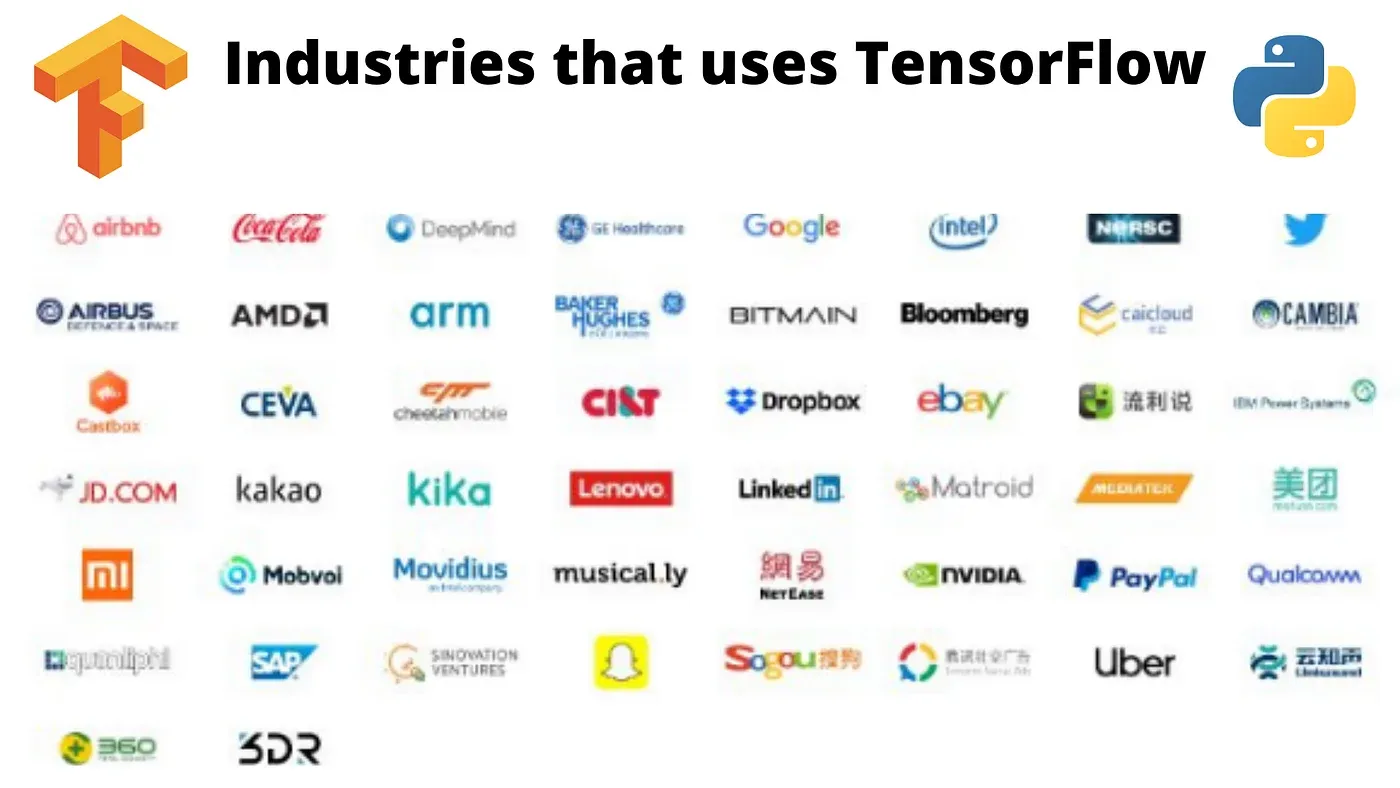
Tensorflow is used across various industries, such as healthcare, finance, retail, and manufacturing. Here are some examples of companies that use Tensorflow:
Industries that use Tensorflow
- Healthcare: Tensorflow is used in healthcare for various use cases, such as medical image analysis and drug discovery.
- Finance: Tensorflow is used in finance for fraud detection, risk management, and portfolio optimization.
- Retail: Tensorflow is used in retail for customer segmentation, recommendation systems, and inventory management.
- Manufacturing: Tensorflow is used in manufacturing for predictive maintenance, quality control, and supply chain optimization.
Suggested Reading:
TensorFlow vs TensorFlow GPU
Companies that use Tensorflow
- Google: Google uses Tensorflow for various use cases, such as image recognition, language translation, and speech recognition.
- Uber: Uber uses Tensorflow for fraud detection, pricing optimization, and route optimization.
- Airbnb: Airbnb uses Tensorflow for demand forecasting, pricing optimization, and search ranking.
- Intel: Intel uses Tensorflow for various use cases, such as image recognition, natural language processing, and speech recognition.
How does TensorFlow Work?
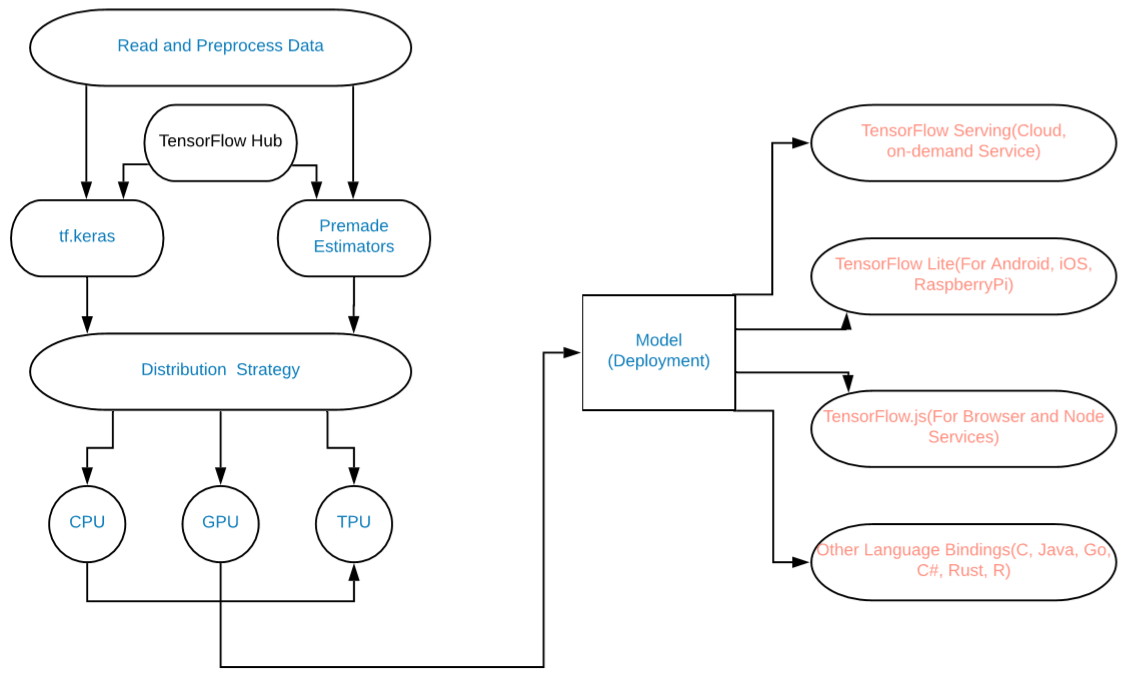
Tensorflow uses a data flow graph to represent the computation in a machine learning model.
The graph consists of nodes and edges, where nodes represent mathematical operations and edges represent the flow of data. Here's a high-level overview of how Tensorflow works:
Tensorflow Workflow
- Building a Computational Graph: Developers define the computation graph by creating nodes and connecting them with edges.
- Running a Session: Developers create a session to run the computation graph and execute operations on the data.
- Updating Variables: Developers update the variables in the model based on the results of the computation.
Tensorflow Architecture
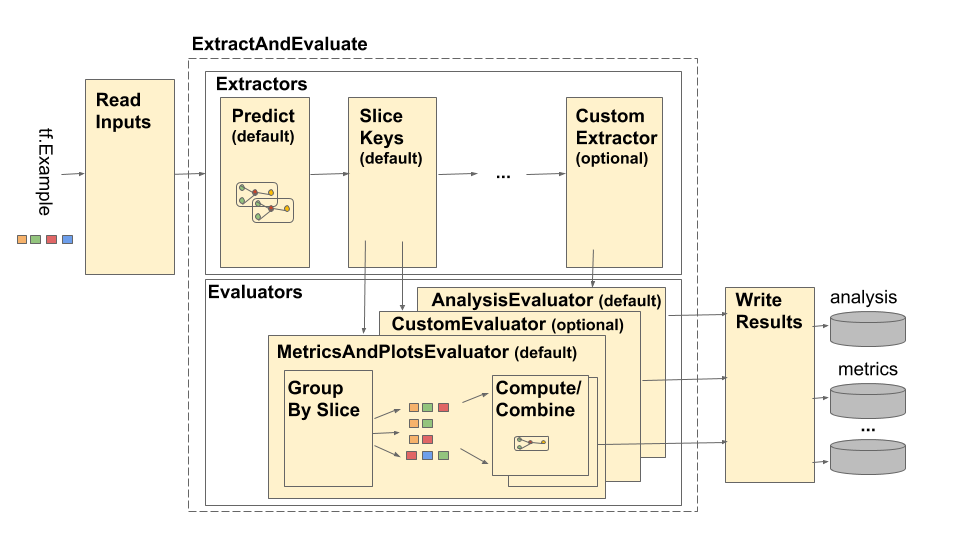
Tensorflow has a modular architecture that consists of several components. Here are the main components of Tensorflow architecture:
Tensorflow Architecture Components
- Graph: The computation graph is the core component of Tensorflow architecture. It represents the computation in a machine learning model.
- Tensor: A tensor is a multidimensional array that represents the data in a machine learning model.
- Operation: An operation is a mathematical operation that is performed on the data in a machine learning model.
- Session: A session is used to run the computation graph and execute operations on the data.
Suggested Reading:
Crafting Smart Chatbots Using TensorFlow: Beginner's Handbook
Tensorflow Operations
Tensorflow provides several types of operations that can be used to build and train machine learning models. Here are the main types of operations in Tensorflow:
Types of Tensorflow Operations
- Mathematical Operations: Tensorflow provides various mathematical operations, such as addition, subtraction, multiplication, and division.
- Array Operations: Tensorflow provides various array operations, such as reshape, transpose, and concat.
- Neural Network Operations: Tensorflow provides various neural network operations, such as convolution, pooling, and dropout.
- Control Flow Operations: Tensorflow provides various control flow operations, such as conditionals and loops.
Tensorflow Datasets
Tensorflow provides several datasets that can be used to build and train machine learning models. Here are some of the most popular datasets in Tensorflow:
Types of Tensorflow Datasets
- MNIST: The MNIST dataset is a collection of handwritten digits that is commonly used for image classification.
- CIFAR-10: The CIFAR-10 dataset is a collection of small images that is commonly used for image classification.
- ImageNet: The ImageNet dataset is a large collection of images that is commonly used for image classification.
- COCO: The COCO dataset is a large collection of images that is commonly used for object detection.
Tensorflow Estimators
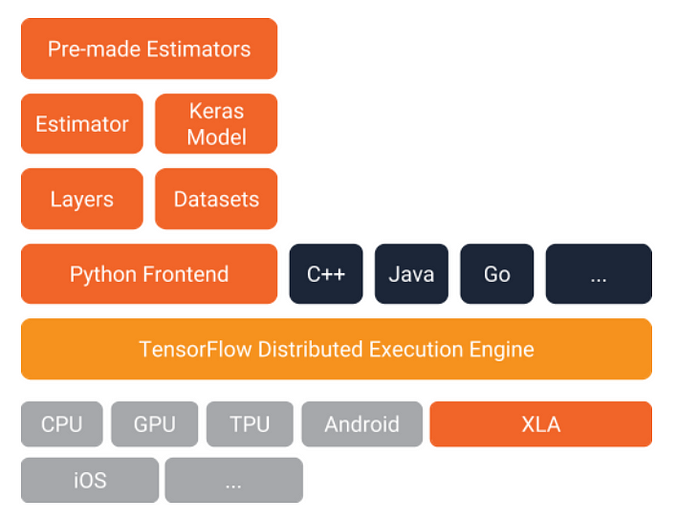
Tensorflow Estimators are a high-level API that makes it easier to build and train machine learning models. Here are some of the most common types of Tensorflow Estimators:
Types of Tensorflow Estimators
- Linear Regression: Linear regression is a type of estimator that is used to predict a continuous value based on one or more input features.
- Logistic Regression: Logistic regression is a type of estimator that is used to predict a binary value based on one or more input features.
- Decision Trees: Decision trees are a type of estimator that is used to predict a value based on a set of rules.
- Random Forests: Random forests are a type of estimator that is used to predict a value based on an ensemble of decision trees.
Tensorflow Serving
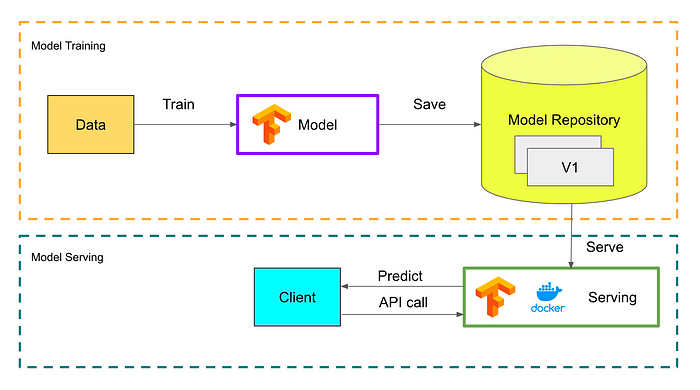
Tensorflow Serving is a system for serving machine learning models in production. Here are the main components of Tensorflow Serving:
Tensorflow Serving Components
- Servables: Servables are the units of deployment in Tensorflow Serving. They represent the machine learning models that are served.
- Models: Models are the machine learning models that are served by Tensorflow Serving.
- Sources: Sources are the locations where the machine learning models are stored.
Frequently Asked Questions (FAQs)
What is TensorFlow?
TensorFlow is an open-source machine learning library developed by Google that enables developers to create, train, and deploy machine learning models easily.
What are TensorFlow's main features?
TensorFlow offers features like easy model building, robust machine learning production, flexible architecture, and support for various platforms and languages.
What can TensorFlow be used for?
TensorFlow is used for various machine learning tasks, including image and speech recognition, natural language processing, recommendation systems, and reinforcement learning.
How does TensorFlow compare to other ML libraries?
TensorFlow is known for its flexibility, scalability, and extensive community support, making it a popular choice among developers compared to other ML libraries.
Are there any alternatives to TensorFlow?
Popular alternatives to TensorFlow include PyTorch, Keras, Theano, Caffe, and Microsoft Cognitive Toolkit (CNTK), each with its own strengths and limitations.

